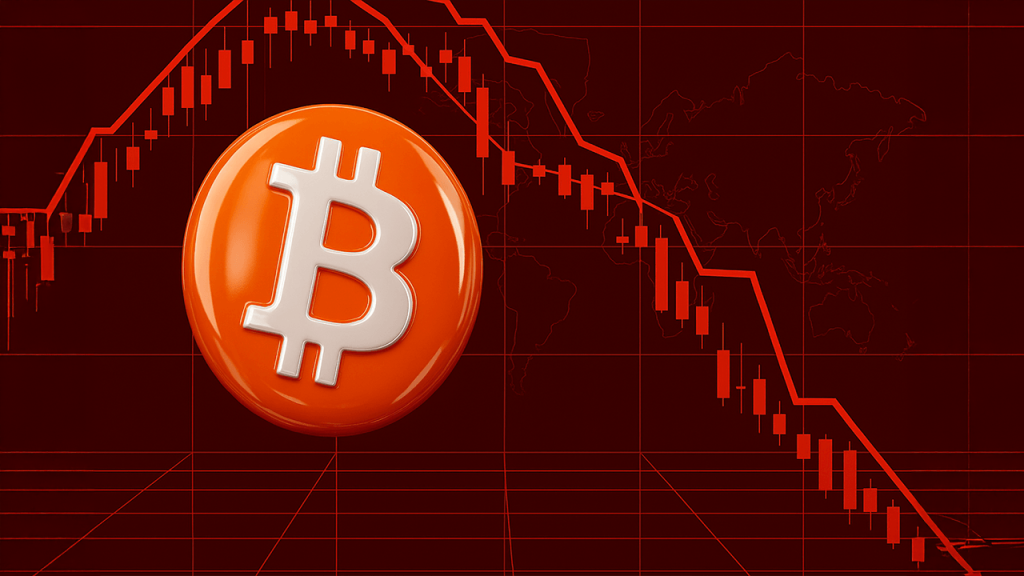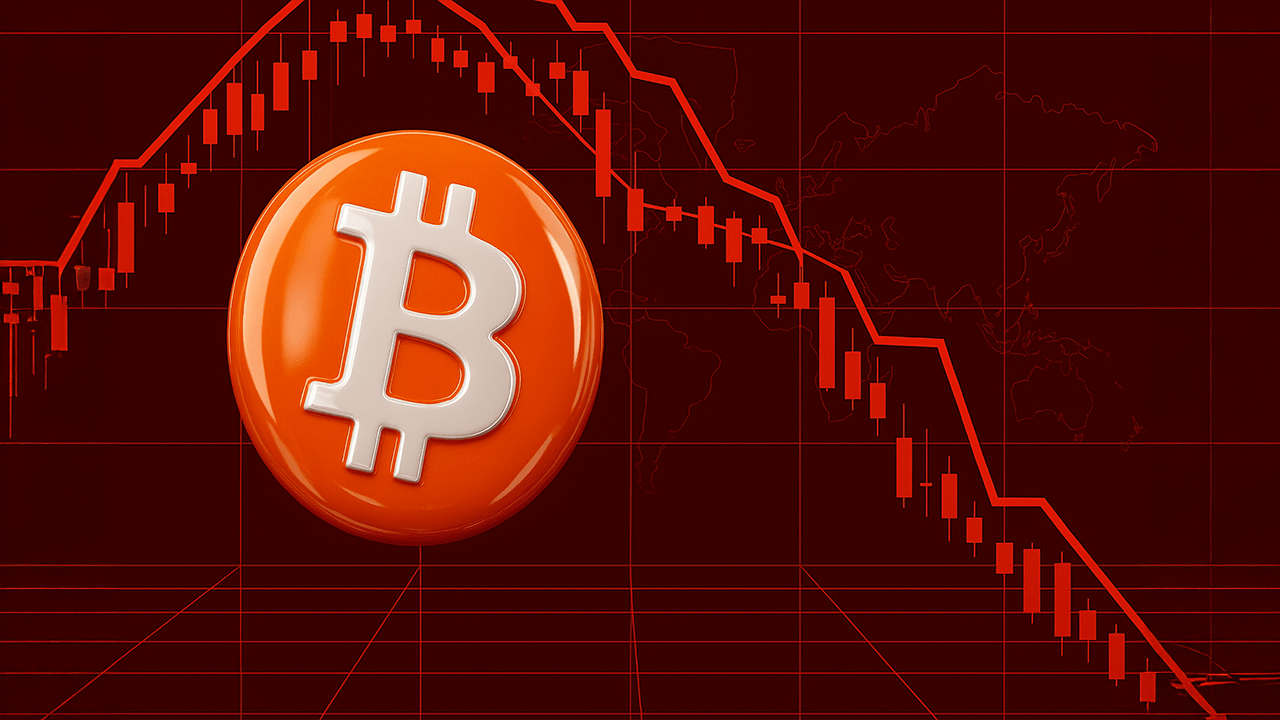
Unpacking the Crypto Carnage: A Deep Dive into the Market Bloodbath and Future Outlook
The Macroeconomic Mayhem: A Perfect Storm
The recent crypto market downturn was not an isolated event but a culmination of several macroeconomic factors that created a perfect storm. The U.S. Federal Reserve’s stance on interest rates has been a significant driver of market sentiment. The anticipation of potential rate hikes has strengthened the U.S. dollar, making riskier assets like cryptocurrencies less attractive. This is because higher interest rates increase the opportunity cost of holding non-yielding assets, such as Bitcoin and many altcoins.
Inflation concerns have further exacerbated the situation. Rising Treasury yields, often a precursor to inflationary pressures, have contributed to a risk-off sentiment. Investors are increasingly wary of central banks tightening monetary policy to combat inflation, which could stifle economic growth. This dual threat of higher interest rates and inflation has created a challenging environment for cryptocurrencies, which are often seen as speculative assets.
Bitcoin’s Bumpy Ride: Resilience Amidst Turbulence
Bitcoin, often considered the bellwether of the crypto market, has shown relative resilience compared to many altcoins. However, it was not immune to the market’s woes. The price of Bitcoin plummeted to below $105,000 before recovering slightly to trade above $113,300. This volatility underscores the fact that even the most established cryptocurrency is not immune to broader market pressures.
Despite the weekly losses, Bitcoin’s market dominance has seen interesting shifts. At one point, Bitcoin’s dominance briefly hit 60%, indicating that investors were rotating from altcoins back into the relative safety of Bitcoin amid the market turmoil. This shift suggests that during periods of high volatility, investors tend to seek refuge in more established and liquid assets. However, more recent data suggests that this dominance has begun to fall again, signaling a potential resurgence in altcoin activity.
Altcoins Under Pressure: A Tale of Two Markets
While Bitcoin weathered the storm with relative stability, altcoins experienced a more severe beating. Ethereum (ETH), the second-largest cryptocurrency, saw a significant decline, alongside other prominent altcoins like XRP and Solana. The magnitude of these losses underscores the higher risk profile associated with altcoins, which tend to be more susceptible to market fluctuations than Bitcoin.
The reasons for the altcoin slump are multifaceted. Firstly, altcoins often exhibit higher beta, meaning their price movements are more exaggerated than Bitcoin’s in both directions. Secondly, negative news or developments specific to individual altcoins can trigger sharp price drops, especially in a risk-off environment. For example, Solana’s substantial losses could be attributed to specific network issues or concerns surrounding its long-term viability.
However, there were exceptions to the rule. TRX was the only top 20 digital asset that saw a rise, demonstrating that certain altcoins can still thrive even during market downturns. POKT and LPT also defied the downtrend, suggesting that projects with unique value propositions or strong community support can withstand market volatility better than others.
Liquidations and Market Sentiment: A Vicious Cycle
The recent crypto crash triggered a wave of liquidations, further exacerbating the downward pressure on prices. Over $692 million in liquidations occurred across the crypto market, with Bitcoin and Ethereum leading the losses. This phenomenon highlights the risks associated with leveraged trading, where even small price movements can result in significant losses and forced liquidations.
Market sentiment also played a crucial role in the downturn. The Crypto Fear & Greed Index, a measure of market sentiment, remained neutral, indicating a lack of strong bullish or bearish conviction among investors. The combination of macroeconomic uncertainty, price declines, and liquidations created a climate of fear and risk aversion, leading many investors to reduce their exposure to cryptocurrencies.
Analyzing the Broader Implications: A Crossroads for the Industry
The recent crypto market downturn has several important implications for the future of the industry. Firstly, market crashes tend to attract greater regulatory scrutiny. Governments and financial authorities may become more inclined to implement stricter regulations on the crypto market to protect investors and prevent future crises.
Secondly, during times of market turmoil, investors often flock to established and liquid assets. This trend could benefit Bitcoin and other major cryptocurrencies with strong track records and deep liquidity. For long-term investors, market crashes can present opportunities to accumulate cryptocurrencies at discounted prices. However, it’s essential to conduct thorough research and carefully assess the risks before making any investment decisions.
Despite the price volatility, the underlying technology and innovation driving the crypto industry remain strong. The downturn could lead to increased focus on developing more robust and scalable blockchain solutions. This could ultimately benefit the industry in the long run, as stronger infrastructure and more reliable technology can attract more institutional investors and mainstream adoption.
Macroeconomic Factors to Watch: Navigating the Uncertainty
As the crypto market navigates this period of uncertainty, several key macroeconomic events warrant close attention. The U.S. Federal Reserve’s decision regarding interest rates on December 18th is poised to be a significant market-moving event. Any indication of a more hawkish stance could trigger further downside pressure on crypto prices.
Monitoring inflation data will be crucial in assessing the potential for further interest rate hikes. Higher-than-expected inflation readings could reinforce expectations of tighter monetary policy. Geopolitical risks can also impact global markets, including cryptocurrencies. Any escalation of conflicts or trade disputes could trigger risk-off sentiment and negatively affect crypto prices.
The Road Ahead: A Journey of Resilience and Innovation
Predicting the future of the crypto market is notoriously difficult. However, by carefully analyzing the underlying trends and macroeconomic factors, investors can make more informed decisions. The recent downturn serves as a reminder that the crypto market is not immune to risk and that volatility is an inherent characteristic of this asset class.
It is important to remember that market corrections are a normal part of the investment cycle. While they can be painful in the short term, they can also create opportunities for long-term growth and innovation. The crypto industry has demonstrated remarkable resilience in the past, and there is reason to believe that it will continue to evolve and adapt to the challenges ahead.
Conclusion: A Resilient Future?
The recent crypto carnage, while unsettling, may ultimately prove to be a necessary growing pain for the industry. The market’s ability to weather this storm will depend on a combination of factors, including macroeconomic developments, regulatory clarity, and continued innovation. Despite the inherent risks, the transformative potential of blockchain technology and cryptocurrencies remains undeniable. As the market matures and institutional adoption increases, we can expect to see greater stability and resilience in the years to come. The journey may be turbulent, but the destination could reshape the future of finance and technology.





